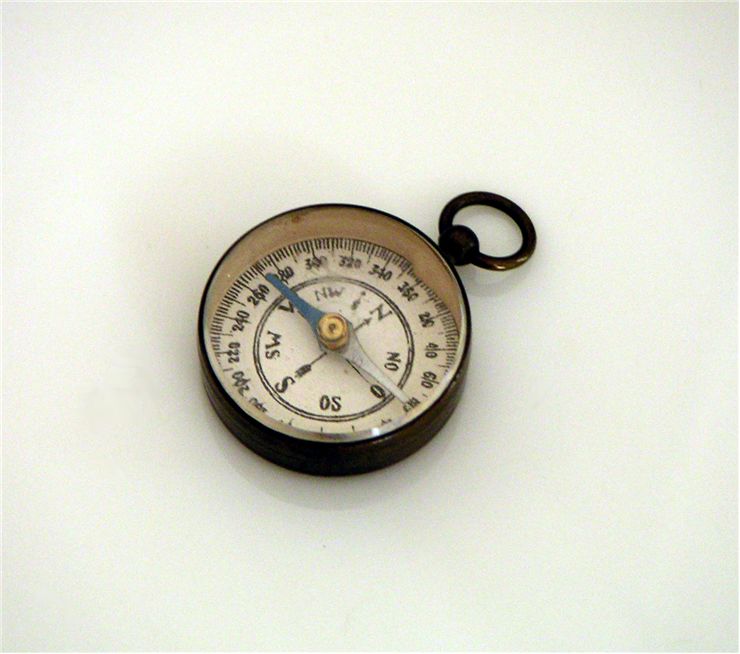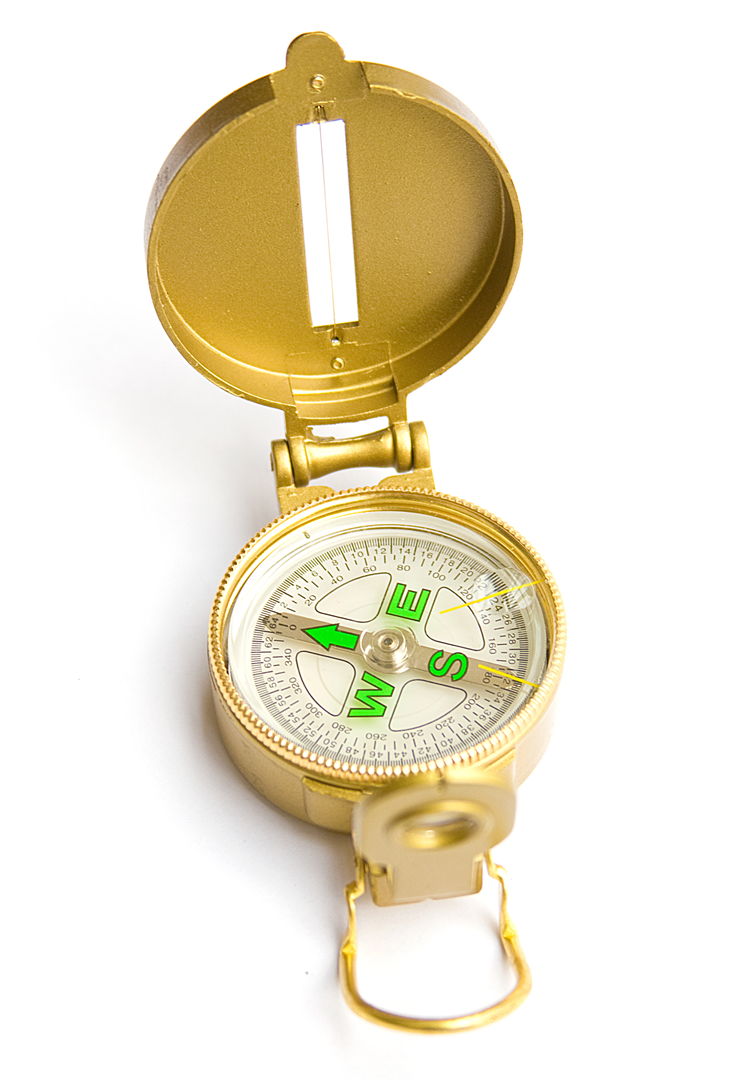How Compass is made? - Construction of a Compass
Manufacturing of compasses changed throughout the history from the simplest to the more complex. First compasses, made in China, were just lumps of lodestone, a naturally magnetized piece of the mineral magnetite, which were suspended by the thread and used for geomancy. Later compasses were shaped like a spoon or ladle whose handle pointed south and were used on the ground or on the plate that had sides of the world written on it. Chinese dry compass was a wooden turtle which had lodestone in it, fixed with wax. The lodestone had a needle sticking out. Turtle balanced on a bamboo needle, rotated freely and the needle pointed north. Later variants had a magnetized iron needle in the shape of a tadpole. For navigation were used liquid compasses - bowls of water on which floated magnetized iron fish whose head pointed south.
So earlier compasses were made from natural materials or by magnetizing the iron. Today’s process is much more complex. Needle is made by first producing the pig iron. Pig iron is made of iron ore, coke, and limestone which are heated in a blast furnace by hot pressurized air. This results in iron which has 90% iron, 3-5% carbon, and various impurities. This material is purified by mixing with oxygen which results in steel which is then heated again and rolled between grooved rollers to form slabs. Slabs are then shaped in few steps until they are proper thickness for needles. Sheets of steel are then cut in a die machine into needles. They are then placed into a an automated turntable which spins while the red color is sprayed on the side of the needle that will point North and white on the South side. Needle is then exposed to the electronic magnetizer which magnetizes the needle to have a proper orientation.
After that, needle is left to dry or, in some cases, it is baked in an oven which speeds the drying. At the same time - housing for compass is made by a process known as injection molding. Polymethyl methacrylate is exposed to high temperatures until it melts into a liquid which is then injected into a mold that has a shape of housing for compass needle. It is then is cooled, opened, solid plastic is removed and will be used as a part of a compass. Some are printed with different markings such are sides of the world, ruler and scale markings and name of the manufacturer. When the compass is assembled, some magnetic needles get a steel pivot, while compasses of higher quality get jeweled pivots which give them longer life and less wear. Needle is held in a vial that is filled with a liquid that will serve as a dampener that causes the needle to come to calm more quickly when it is disturbed. Vial is than closed and the compass finished.
Because a compass is relatively simple instrument, it is possible to made one at home. Take one sewing needle and rub it with a magnet in one direction until it becomes magnetized. Take a cork and cut 5mm of it with a sharp knife. Take that small part and stab a needle through it in a way that it lays horizontally. When you put cork with a needle in a glass of water, needle will point North.

